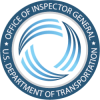What We Looked AtTunnels are important parts of the Nation’s highway infrastructure. According to the Federal Highway Administration (FHWA)—the Agency responsible for overseeing tunnels—an average of 15 million vehicles a day travel through more than 500 tunnels on public roads across the country. The majority of these tunnels have exceeded their designed service lives, and timely and reliable inspections help detect safety problems and prevent failures. The Moving Ahead for Progress in the 21st Century Act of 2012 (MAP-21) required FHWA to implement a tunnel safety program. Given the importance of FHWA’s role in tunnel safety, we conducted this audit to assess the Agency’s progress in implementing its tunnel safety program. Specifically, we focused on FHWA’s (1) maintenance of a national tunnel inventory, (2) compliance review process, and (3) monitoring of critical risks to tunnel safety.What We FoundFHWA has made progress implementing a comprehensive tunnel safety program as required by MAP-21 by establishing a national tunnel inventory, inspection standards, training for tunnel inspectors, and annual compliance reviews. However, we found that FHWA’s national tunnel inventory is incomplete because the Agency has not provided clear guidance to its Divisions and the State DOTs on how to classify some types of structures as tunnels and verify that they have inventoried all tunnels. Inaccurate and unreliable data also persist in the inventory due to inadequate data processing procedures that do not flag errors or require corrections. In addition, some internal controls for FHWA’s tunnel safety compliance review process are ineffective, resulting in compliance determinations that do not reflect the severity of deficiencies or adhere to the Agency’s review criteria. Lastly, FHWA has created an internal database to monitor critical tunnel safety risks, but the database lacks a clear scope and detailed guidance to help ensure that Division staff input complete and accurate data.Our RecommendationsWe made 12 recommendations to help FHWA improve the implementation of its tunnel safety program. FHWA concurred with seven recommendations and partially concurred with the other five. In response, we requested that FHWA clarify and reconsider its actions.
Open Recommendations
| Recommendation Number | Significant Recommendation | Recommended Questioned Costs | Recommended Funds for Better Use | Additional Details | |
|---|---|---|---|---|---|
| 1 | Yes | $0 | $0 | ||
| Revise the October 2015 guidance on structures subject to the national tunnel inspection standards to clarify which structures align with the definition of a tunnel and explain how potential non-tunnel structures conflict with the definition. | |||||
| 2 | Yes | $0 | $0 | ||
| Issue guidance for FHWA Divisions on how to verify that State DOTs, Federal agencies, and tribal governments have reported all highway tunnels to the national tunnel inventory; and for informing those stakeholders of methods they could employ to identify all structures considered to be highway tunnels. | |||||
| 7 | Yes | $0 | $0 | ||
| Assess the process for conducting compliance reviews of other Federal agencies and implement any recommended changes to ensure the reviews are effectively staffed and sufficiently independent. | |||||
| 9 | Yes | $0 | $0 | ||
| Update the tunnel safety program compliance review manual to incorporate existing review process flexibilities, such as when unusual or unique circumstances impact tunnel inspection intervals. | |||||
| 10 | Yes | $0 | $0 | ||
| As part of the next update to the tunnel safety program compliance review manual, solicit and consider external stakeholder input on the Agency's review procedures to include States, Federal agencies, and interested and knowledgeable private organizations and individuals. | |||||
| 11 | Yes | $0 | $0 | ||
| Update the guidance for the national critical findings database to clarify its scope and incorporate comprehensive controls for ensuring the quality of the reported data. Solicit external stakeholder input in developing the updated guidance and communicate it to all stakeholders. | |||||


